Winning the Battle Against Carolina Geranium: A Guide for Baton Rouge Homeowners by GreenSeasons3/11/2024 In the heart of Baton Rouge, Louisiana, homeowners take pride in their lush, well-manicured lawns that not only beautify their properties but also contribute to the overall charm of their neighborhoods. However, the battle for a perfect lawn is often challenged by the invasive presence of Carolina geranium (Geranium carolinianum), a common weed that can detract from the lawn's appearance and health. GreenSeasons, a leader in lawn care and landscaping services in Baton Rouge, offers comprehensive strategies to control Carolina geranium and restore the beauty of your lawn. Understanding Carolina Geranium
Carolina geranium, also known as cranesbill, is a winter annual weed recognizable by its dissected leaves and small, pink to purplish flowers. It typically emerges in the cooler months and can spread rapidly, competing with grass and ornamental plants for nutrients, water, and space. Its resilience and ability to produce numerous seeds make it a formidable opponent for homeowners aiming for pristine lawn conditions. The Impact of Carolina Geranium While Carolina geranium might not be the most aggressive weed, its presence signals that your lawn might not be in optimal health. It tends to invade areas where the grass is weak or sparse, creating unsightly patches that can diminish curb appeal and the overall aesthetic of your outdoor space. Furthermore, its ability to spread quickly can lead to more significant infestations if not addressed promptly. GreenSeasons' Expert Control Strategies 1. Promote Lawn Health The foundation of effective weed control, including against Carolina geranium, lies in maintaining a vigorous, healthy lawn. GreenSeasons recommends a comprehensive lawn care routine that includes proper fertilization, regular mowing, and adequate watering. A well-fed and properly maintained lawn can outcompete most weeds, including Carolina geranium, by providing little space for them to establish. 2. Correct Mowing Techniques Mowing your lawn to the right height can significantly deter Carolina geranium growth. Grass that is too short can weaken and create opportunities for weeds to take over. Keep your lawn at a height of approximately 2.5 to 3 inches to encourage dense growth and reduce the light available to weed seeds on the soil surface. Regular mowing also helps remove weed flowers before they can produce seeds, reducing future infestations. 3. Manual Removal For small infestations, manual removal of Carolina geranium can be effective. Ensure you pull out the entire plant, including the root, to prevent regrowth. This method is most efficient when the soil is moist, such as after a rain, making it easier to remove the weed completely. GreenSeasons advises wearing gloves and using a tool, like a dandelion fork, to make the task easier and more effective. 4. Targeted Herbicide Use In cases where Carolina geranium has spread widely, a selective herbicide may be necessary. Selective herbicides can target broadleaf weeds without harming your grass. GreenSeasons recommends using these products in the early stages of growth for best results. It's crucial to follow the manufacturer's instructions for application rates and safety precautions to protect your lawn, yourself, and the environment. 5. Soil Health and Aeration Compacted soil can hinder the growth of healthy grass and encourage weeds like Carolina geranium. GreenSeasons offers professional aeration services to improve soil structure, allowing air, water, and nutrients to penetrate deeper into the ground. This process encourages deeper root growth of your lawn grass, enhancing its ability to compete with and suppress weed growth. 6. Professional Lawn Care Assistance Managing Carolina geranium and maintaining a healthy lawn can be challenging and time-consuming for many homeowners. GreenSeasons provides professional lawn care services tailored to the specific needs of Baton Rouge lawns. Our expert team can develop a personalized plan that includes weed control, fertilization, aeration, and more to ensure your lawn remains vibrant and weed-free. Conclusion Carolina geranium can be a persistent problem in Baton Rouge lawns, but with the right approach, it is possible to control this weed and achieve a lush, beautiful lawn. By focusing on lawn health, using proper mowing techniques, and considering professional lawn care services, homeowners can effectively manage Carolina geranium and other common lawn weeds. GreenSeasons is committed to helping Baton Rouge residents enjoy their outdoor spaces to the fullest, with healthy, weed-free lawns that reflect the pride of homeownership. For more information on controlling Carolina geranium or to schedule a lawn care consultation, visit GreenSeasons' website or contact us directly. Let our team of lawn care professionals help you achieve the perfect lawn you've always dreamed of.
0 Comments
In the lush landscapes of Baton Rouge, Louisiana, homeowners pride themselves on their vibrant, healthy lawns that add beauty to their homes and the community. However, amidst the verdant green, an uninvited guest often makes an appearance: white clover. While some may find its white flowers charming, white clover can be more than just an aesthetic nuisance; it's a sign of underlying lawn health issues. GreenSeasons, a leading lawn care and landscape company in Baton Rouge, offers homeowners expert advice on controlling white clover and maintaining the health and beauty of their lawns. Understanding White Clover
White clover (Trifolium repens), a perennial weed, is known for its distinctive trifoliate (three-leaf) leaves and white, ball-shaped flowers. It thrives in lawns that are low in nitrogen since it can fix its own nitrogen, giving it an advantage over traditional grasses. This ability makes white clover a common sight in lawns that are undernourished. Why Control White Clover? While some homeowners may not mind the appearance of white clover, it can quickly spread and take over a lawn, competing with grass for space, light, and nutrients. Additionally, white clover attracts bees, which, while beneficial for pollination, can be a concern for families with young children or those allergic to bee stings. Proper management and control of white clover are essential for maintaining a lush, uniform lawn that enhances your home's curb appeal. Expert Tips from GreenSeasons 1. Maintain Lawn Health The first step in controlling white clover is to address the underlying cause of its proliferation. GreenSeasons recommends a soil test to determine your lawn's nutrient levels. If your soil is low in nitrogen, consider applying a slow-release nitrogen fertilizer to help your grass compete more effectively against white clover. Regular feeding, proper mowing, and adequate watering are critical to maintaining a healthy, dense lawn that can resist weed invasion. 2. Proper Mowing Practices Mowing your lawn at the right height can also help control white clover. Grass that is too short may become stressed and thin, creating opportunities for white clover to spread. GreenSeasons suggests keeping your lawn at a height of about 2.5 to 3 inches. This height helps the grass shade out weeds and encourages deeper root growth, making your lawn more resilient. 3. Weed Removal and Control For immediate white clover removal, hand-pulling can be effective, especially if the problem is localized. Ensure you remove the entire root system to prevent regrowth. For larger infestations, GreenSeasons recommends selective herbicide treatments that target broadleaf weeds without harming the grass. It's essential to follow the product instructions carefully and apply during optimal conditions to avoid damage to surrounding plants and maximize the herbicide's effectiveness. 4. Consider Clover's Benefits In some cases, homeowners may choose to embrace white clover as a part of their lawn. Its ability to fix nitrogen can improve soil health, and its flowers are attractive to pollinators. If you decide to keep some clover, GreenSeasons advises managing its spread to maintain a balance with your grass and ensure a diverse, healthy lawn ecosystem. 5. Professional Lawn Care Services Controlling white clover and maintaining a healthy lawn can be time-consuming and requires ongoing effort. GreenSeasons offers professional lawn care services tailored to Baton Rouge's unique climate and soil conditions. Our team of experts can provide customized fertilization, weed control, and lawn maintenance plans to keep your lawn looking its best all year round. Conclusion White clover control is more than just a cosmetic issue; it's about maintaining the health and vitality of your lawn. By understanding the reasons behind clover's appearance and taking proactive steps to improve lawn health, Baton Rouge homeowners can enjoy lush, beautiful lawns that enhance their property's value and appeal. Whether you choose to tackle white clover on your own or seek professional assistance from GreenSeasons, the key is consistent care and attention to your lawn's needs. For more information on our lawn care services or to schedule a consultation, visit GreenSeasons' website or contact us directly. Let us help you achieve the beautiful, clover-free lawn you deserve. Early spring in South Louisiana offers a unique opportunity to rejuvenate your lawn and landscape, preparing it for the vibrant growth of the warmer months. The mild climate, characterized by warm, humid days and cool evenings, creates an ideal environment for many types of grasses, plants, and flowers. Here's an 800-word guide on how to make the most of this season for your lawn and landscape. Assess and Clean
1. Assessment Begin with a thorough assessment of your lawn and garden. Look for winter damage, noting areas that may need special attention, such as patches where grass has thinned or plants that didn't survive the cooler months. 2. Cleanup Clear debris, such as fallen branches, leaves, and thatch (a layer of dead grass and roots) that may have accumulated over the winter. Removing this material not only tidies up your yard but also improves air and moisture penetration to the soil. Soil Preparation 3. Soil Testing Conduct a soil test to determine its pH and nutrient levels. South Louisiana soils can vary greatly, and knowing your soil's composition will help you make informed decisions about fertilizing and amending your soil for optimal plant health. 4. Aeration Aerating your lawn can relieve soil compaction, allowing roots to breathe and grow more deeply. This process involves making small holes in the soil to improve water, nutrient, and oxygen absorption. 5. Fertilization Based on your soil test results, apply a spring lawn fertilizer that's appropriate for your grass type. In South Louisiana, lawns are often composed of warm-season grasses like Bermuda, Zoysia, or St. Augustine, which benefit from fertilization as they begin active growth. Lawn Maintenance 6. Mowing As the weather warms and your lawn starts to grow, begin mowing at the recommended height for your grass type. This usually means keeping the blades high to encourage root development and shade out weeds. 7. Watering Begin watering your lawn and garden as necessary. Early spring often brings rain, but during dry spells, ensure your lawn receives about an inch of water per week. Morning watering is best to reduce evaporation and disease risk. Planting and Landscaping 8. Plant Selection Choose plants that are well-suited to the South Louisiana climate. Consider native plants, which are adapted to the local environment and require less maintenance. Early spring is a good time to plant perennials, as well as some annuals, for a season-long display. 9. Vegetable and Herb Gardens Early spring is the perfect time to start a vegetable or herb garden. Consider starting with cool-season crops like lettuce, spinach, and cilantro, transitioning to warm-season varieties like tomatoes, peppers, and basil as the weather warms. 10. Mulching Apply a layer of mulch around trees, shrubs, and garden beds to retain moisture, regulate soil temperature, and reduce weed growth. Organic mulches, such as wood chips or pine straw, also add nutrients to the soil as they decompose. Pest and Weed Management 11. Weed Control Early intervention is key to managing weeds. Apply pre-emergent herbicides to prevent weed seeds from germinating, and hand-pull or use post-emergent herbicides for any weeds that have already appeared. 12. Pest Monitoring Keep an eye out for signs of pests, such as damaged leaves or unhealthy plant growth. Early detection can make management easier, whether through cultural practices, natural predators, or, if necessary, appropriate pesticides. Seasonal Considerations 13. Frost Protection While rare, late frosts can occur. Be prepared to protect tender plants with frost cloths or by bringing potted plants indoors on chilly nights. 14. Pruning Early spring is a good time to prune certain shrubs and trees, removing dead or diseased wood and shaping plants before the growing season. However, wait to prune spring-flowering shrubs until after they bloom to avoid cutting off flower buds. Ongoing Maintenance 15. Regular Inspection Regularly walk through your lawn and garden, looking for signs of stress or disease. Early detection and intervention can prevent many problems from becoming severe. 16. Adapt and Enjoy Be flexible and responsive to your landscape's needs. Conditions in South Louisiana can change rapidly, so adapt your maintenance practices as needed. Most importantly, take time to enjoy the beauty and bounty of your garden throughout the season. Conclusion Caring for your lawn and landscape in early spring sets the stage for healthy growth and lush beauty throughout the year. By following these steps, you can ensure that your outdoor space in South Louisiana thrives, providing a beautiful and enjoyable extension of your home. Remember, the key to a successful garden and lawn is consistent care and attention to the specific needs of your plants and the local climate. Happy gardening! So, your lawn's looking like it just survived a deep freeze, huh? Brown patches, grass playing dead, and an overall "brrr" vibe? No worries – we're here to help you thaw out your outdoor space and have it looking sunny in the spring after it's been through a freeze-induced winter slump. In this laid-back guide, we'll spill the beans on how to revive your lawn and have it basking in the post-freeze sunshine. Getting to Know the Freeze Drama Before we embark on this lawn-recovery journey, let's get cozy with the drama your lawn went through during the freeze. Picture this: soil turned into a rock-hard popsicle, grass roots wrapped up like winter burritos, and your lawn becoming the neighborhood ice queen. Understanding these issues is like getting the inside scoop – it'll guide your comeback strategy and help you show your lawn some serious love. Lawn Inspection Time Grab a cup of something warm, and let's take a stroll around your yard. Spot any spots that look like they've seen better days? Brown or dead grass, soil as hard as frozen yogurt – take note of it all. And keep an eye out for any unwanted guests like pests or diseases that hibernated in your lawn. Poke Some Holes – Lawn Aeration Style Your lawn needs a post-freeze massage, literally. Rent a lawn aerator and let it do its thing, poking holes in the soil like it's giving your lawn a spa day. This helps the soil loosen up, allowing water and nutrients to defrost and mingle with the grass roots. Think of it as your lawn's hot tub party. Throwing a Grass Seed Mardi Gras Your lawn's going to need some new friends – grass friends, that is. Pick up a quality grass seed blend that vibes with your region and your lawn's personality. Spread that seed like confetti, making sure it gets cozy with the soil. This will fill in the bare spots, bring the grass back to life, and give your lawn some serious springtime swagger. Fertilize Smart, Not Hard Time to feed your lawn, but don't go overboard – we're not trying to stress it out more. Grab a balanced fertilizer, the kind your grass would appreciate, and sprinkle it like you're seasoning a hearty winter stew. Follow the instructions, and for the love of all things green, water the lawn after. It's thirsty, you know? Watering Wisdom Watering is an art form, my friend. Forget about sprinkling like you're in an ice fight. Your lawn prefers deep sips, not shallow sips. Water early in the morning – it's like a sunrise for your grass. And if you're really fancy, invest in a smart irrigation system. It's like having a lawn butler that knows exactly when to defrost the crew. Mowing: Grass Haircuts, Not Stressful Makeovers Your lawn's hair needs a trim, but don't get scissor-happy. Raise the mower blade, let the grass hair grow a bit taller. Longer grass means less evaporation, deeper roots, and an all-around happy lawn. And keep those mower blades sharp – your grass deserves a clean, stress-free cut. Evicting Unwanted Lawn Guests Pests and diseases crashing the post-freeze party? Show them the door. Keep an eye out for weird stuff – discolored or damaged grass, suspicious patches – and consult the local gardening whisperer for advice. Integrated pest management is the cool way to handle these party crashers, combining a bit of everything to kick them out. Pampering the Soil Your soil needs some love too, you know. Introduce it to organic matter – compost, well-rotted manure, the good stuff. Spread it over the lawn like a cozy blanket and rake it in. This is like a spa treatment for your soil, making it the envy of the neighborhood. Zen Mode: Patience and Consistency Recovering your lawn isn't a sprint; it's a thaw. Don't rush it, and don't go all out with treatments that might stress out your grass even more. Keep an eye on the progress, make tweaks as needed, and enjoy the journey. Your lawn will thank you in its own green way. Turning your lawn from a freeze hangover into a sunny haven is a laid-back process that requires some chill vibes and a bit of effort. Poke some holes, throw a grass seed fiesta, fertilize with care, water like a pro, give your grass a post-freeze spa day, and kick out any unwanted guests. With a bit of patience and consistency, your lawn will be the life of the neighborhood party in no time. So, grab your gardening gloves and let's get that lawn back to its lush, green glory – because every lawn deserves a warm comeback!
Fall is the time for reflection, transition, and preparation. It's also the perfect time to start the recovery process for your lawn after it has faced the brutal impacts of a summer heatwave and drought. While most warm-season grasses are known for its resilience and low maintenance, extreme conditions can still take a toll on its health. Here's a guide to help you nurse your lawn back to its verdant best.
1. Assess the Damage Before diving into any recovery actions, take a stroll around your lawn to assess the damage. Check for areas that are brown, thin, or bare. This will give you an idea of where to focus your efforts and how much intervention is needed. 2. Start with Proper Watering Hydration is key to help your lawn recover. After a prolonged drought:
Heatwaves and drought can compact the soil, making it difficult for water, oxygen, and nutrients to reach grass roots.
Thin or bare patches can benefit from new sod:
After a drought, your lawn is starved of essential nutrients. Reintroduce them with a balanced, slow-release fertilizer:
Weeds can take advantage of a weakened lawn. Address them in the fall to give your grass a better chance of thriving come spring.
Your mowing habits can impact the recovery process:
Allow your recovering lawn some peace. Minimize foot traffic and avoid parking vehicles or placing heavy equipment on it. This will reduce compaction and stress. 9. Monitor for Pests and Diseases Stressed lawns can attract pests like chinch bugs or fall prey to diseases like brown patch. Regularly inspect your lawn and address any issues immediately. 10. Be Patient and Consistent Recovery is a process. While fall is a great time to initiate these efforts, remember that full recovery might take until the next growing season. Stay consistent in your care, and before you know it, your lawn will be the lush green oasis you remember. In conclusion, while heatwaves and drought can severely impact your grass lawn, with the right fall recovery strategies, it's possible to bring it back to life. A combination of proper watering, aeration, sod, and attentive care can help your lawn rebound and prepare it for the next growing season. Maintaining a lush and vibrant lawn is a point of pride for many homeowners, and in Baton Rouge, Louisiana, where the climate is warm and humid, St. Augustine grass is a popular choice. Known for its ability to thrive in the Southern climate, St. Augustine grass requires proper care and attention to ensure its health and beauty. This comprehensive guide will explore the essential steps and best practices for caring for St. Augustine grass in Baton Rouge.
Soil Preparation Before planting St. Augustine grass, properly preparing the soil is crucial. Start by removing vegetation, rocks, and debris from the area. Test the soil's pH level, aiming for a slightly acidic range of 6.0 to 6.5, which promotes optimal growth for St. Augustine grass. If the pH is too low, add lime to raise it, and if it's too high, amend the soil with sulfur. Incorporate organic matter, such as compost, into the soil to improve its fertility and drainage. Watering St. Augustine grass requires regular watering to thrive, especially during the hot Louisiana summers. It's best to water deeply and infrequently to encourage deep root growth. Watering deeply allows the roots to penetrate deeper into the soil, making the grass more resilient during dry spells. Water your lawn early in the morning to minimize evaporation and reduce the risk of disease. Aim to provide the grass with 1 inch of water per week, adjusting the amount during periods of drought or heavy rainfall. Fertilization Proper fertilization is crucial for maintaining the health and vigor of St. Augustine grass. Start by conducting a soil test to determine the nutrient deficiencies in your lawn. Ideally, fertilize your lawn twice a year—once in late spring and again in late summer or early fall. Use a slow-release, nitrogen-rich fertilizer specifically formulated for St. Augustine grass. Avoid applying fertilizer during the dormant winter months, as it may cause excess growth and increase the susceptibility to disease. Mowing Regular mowing is essential for keeping St. Augustine grass healthy and visually appealing. Set your mower blades to a height of 3 to 4 inches, as cutting the grass too short can weaken it and make it more susceptible to weeds and pests. Aim to mow your lawn every 7-10 days during the growing season, adjusting the frequency based on growth rates. Keep your mower blades sharp to ensure clean cuts and minimize stress on the grass. Weed Control Maintaining a weed-free lawn is crucial for the optimal growth of St. Augustine grass. Apply pre-emergent herbicides in early spring, before weed seeds germinate. This helps prevent the growth of common weeds like crabgrass and dandelions. For existing weeds, use post-emergent herbicides specifically labeled for St. Augustine grass. Take care to follow the instructions carefully to avoid damaging your lawn. Regularly inspect your lawn for weeds and promptly address any infestations to prevent them from spreading. Pest and Disease Management St. Augustine grass is susceptible to certain pests and diseases, so it's essential to stay vigilant and take preventive measures. Common pests include chinch bugs, armyworms, and sod webworms. Regularly inspect your lawn for signs of infestation, such as brown patches or thinning areas, and take appropriate action, such as using insecticides specifically formulated for St. Augustine grass. Similarly, keep an eye out for diseases like brown patch and gray leaf spot. Proper watering, good soil drainage, and regular maintenance practices can help prevent many common diseases. Conclusion Caring for St. Augustine grass in Baton Rouge requires attention to key factors such as soil preparation, watering, fertilization, mowing, weed control, and pest and disease management. By following these essential steps and best practices, you can ensure a healthy and vibrant lawn year-round. Remember, soil preparation sets the foundation for a healthy lawn. Take the time to remove any existing vegetation and rocks, test the soil pH, and incorporate organic matter for improved fertility and drainage. Watering deeply and infrequently is crucial for St. Augustine grass. Water your lawn early in the morning, aiming for 1 inch of water per week. Adjust the amount during periods of drought or heavy rainfall to prevent over or under-watering. Fertilization is key to maintaining the health and vigor of your St. Augustine grass. Conduct a soil test to determine nutrient deficiencies and apply a slow-release, nitrogen-rich fertilizer twice a year. Avoid fertilizing during the dormant winter months. Proper mowing practices contribute to the overall health of your lawn. Set your mower blades to a height of 3 to 4 inches and mow regularly, adjusting the frequency based on growth rates. Remember to keep your mower blades sharp for clean cuts and reduced stress on the grass. Weed control is essential for a lush St. Augustine lawn. Apply pre-emergent herbicides in early spring to prevent weed seeds from germinating. Use post-emergent herbicides specifically labeled for St. Augustine grass to tackle existing weeds. Regular inspection and prompt action are crucial to prevent weed infestations from spreading. Pest and disease management should be a part of your lawn care routine. Watch for common pests like chinch bugs, armyworms, and sod webworms. Use insecticides specifically formulated for St. Augustine grass and follow the instructions carefully. Similarly, watch for diseases such as brown patch and gray leaf spot. Proper watering, good soil drainage, and regular maintenance practices can help prevent these issues. In addition to these general care guidelines, there are a few extra tips to remember. Avoid heavy foot traffic on your lawn, as St. Augustine grass is sensitive to compaction. Provide regular aeration to improve soil oxygenation and drainage. Avoid excessive thatch buildup by dethatching when necessary. Lastly, regular maintenance and observation are essential for a thriving lawn. Keep an eye out for any changes in color, texture, or growth patterns that may indicate underlying issues. Address them promptly to prevent further damage and maintain the health and beauty of your St. Augustine grass. In conclusion, caring for St. Augustine grass in Baton Rouge requires attention to soil preparation, watering, fertilization, mowing, weed control, and pest and disease management. By following these guidelines and investing time and effort into your lawn care routine, you can enjoy a lush, vibrant, and healthy St. Augustine lawn that enhances the beauty of your home and brings joy to your outdoor spaces. Winter is a beautiful season, but it may not be so beautiful for your lawn. In the winter, if it is too cold it is easy for your landscape to become damaged. Because of that it makes fall an important time to prepare your yard for the upcoming season. Prepping Your Lawn for WinterWhen cutting your lawn to prepare for the winter season cut it to about 1 to 1 1/2 inches in height. If your grass is 3 inches or taller then you should cut it down slowly over time. If you cut too much at once then it could stress the grass blades. Aeration is another thing you can do to help your lawn. You can do this by using a core aerator, manual aerator, and you can even use an aerator attachment for a lawnmower. You should aerate at least four weeks before winter. Also a wonderful time to fertilize your landscape is right after you aerate. Fertilizing is also important when prepping for the colder months. Keep in mind that the best time to do this is before the grass starts to change color. Fertilizer gives the grass more sustenance which makes it easier for it to survive in the winter, and bounce back in the spring. Fall is also a good time to overseed your lawn. You should overseed your lawn several weeks ahead of the winter. It will make your lawn more full when spring comes back around. Raking the leaves in your yard will help the grass stay healthy. When leaves pile up they put pressure on the grass below them. That pressure can damage grass blades. The grass also receives less sun when it is covered by leaves. Additionally, be careful of raking your landscape when it is wet. Raking the yard when it is wet will sometimes cause grass to be uprooted. Taking the time to prepare your lawn will help it survive the winter, return in the spring, and help it stay as healthy as possible.
Why is Irrigation Important?Irrigation systems keep your landscaping hydrated automatically to save you the brainpower of remembering to do it yourself during a hot month. It helps your plants to maintain their health by applying the correct amount of water at the correct time. If you have too much water, then your yard will be bogged down, your plant’s roots rot, and fungi start to proliferate. If you have too little water, then everything starts to die. A good irrigation system will filter out some of the harsh chemicals that you can find in your soil, such as salts, toxins, or excess minerals. Dead grass, muddy shoes, and dried-out landscape are some of the things that I personally hate seeing when trying to enter my home after a long day. A correctly designed irrigation system will alleviate some of these issues. Also, an irrigation system saves me the trouble of having to do all the work myself. Drip IrrigationDrip irrigation is more costly, but it uses less water. Drip irrigation directly deposits the water into your landscape, garden, or flower beds. Since it directly deposits, there will not be as much excess water to flood your yard and to allow your mulch, fertilizer, or soil to float away. Drip irrigation might also be better if your yard retains a lot of water. Reoccurring problems that come with drip irrigation are clogged pipes, clogged emitters, and algae build-up. Also in the warmer seasons, the pipes might break beacause of the amount of heat. Clogged pipes can be fixed by running the irrigation system for about an hour after putting in a solution. This will help break down anything blocking the pipes. You can clean the emitters with wire or soaking them in vinegar. If there is an algae build-up then you can fix it with chlorine. Traditional IrrigationTraditional irrigation is less costly to install, but it uses more water than drip irrigation does to hydrate your landscape. To some people it is also more pleasing to look at than drip irrigation. Common traditional sprinkler problems include broken heads, pipes, and timer boxes. To fix a broken pipe all you need to do is find the leak, take our the broken pipe, and then put a coupling pipe in the place of the absent pipe. You could just replace a sprinkler head if it is broken. Lastly, to fix a timer box is broken make sure that the fuses are okay. You can replace the fuses but you could also replace the timer box itself. Irrigation TimingA great time for your irrigation system to run is in the morning. After running in the morning, the excess water will be evaporated throughout the day. If the excess water is gone than you will not have to worry about over watering your yard. If you overwater your yard you will also encounter problems such as fungus or dead grass.
Irrigation is a wonderful invention that is used to help water your landscape whenever you need it. With a properly irrigated landscape you will have a wonderful yard and wonderful area for activities. Lawns can become moist over prolonged periods of time for many reasons. Some of those reasons include problems such as one’s lawn not receiving enough sun, grading problems, and improper filtration. Sometimes a lawn’s moisture persists because the soil of someone’s lawn contains smaller particles that hold in more water than other types of soil. Lawn grading is important because it allows the water to flow away from one’s property and making sure your lawn is properly watered. Grading problems include low spots in your landscape and raised areas. If you have those problems than you will see a possible pooling of water in unwanted places. Improper irrigation can lead to the overt moisture in your lawn by watering too much or at improper times. Making sure that your irrigation is well done can lead to a better-looking lawn. Also, proper irrigation can contribute to the overall health of one’s landscape. If your lawn is made up of or is primarily made up of clay it may contribute to a consistently wet lawn. Clay soil contains more water because it is made up of smaller particles. Ways to Fix Your Wet LawnEven though your lawn may be constantly wet there are ways that you can fix it. One way that you can fix your lawn is adding topsoil with a layer of straw. If you add topsoil and straw to the low areas than it will help the water gather in less of a concentrated area because it will be more level.
Furthermore, you can check to see if your landscape is properly irrigated and graded. Also making sure your lawn gets enough sunlight can help it become less bogged down with water. Aeration is another good way to help your lawn. The aeration process helps drain more water through soil. It also helps loosen up tight soil which promotes root growth. Another way that you can fix it is adding vegetation or more plants. Plants and vegetation will take up more water from your lawn. Making sure your yard receives proper sunlight will also promote growth and help evaporate some of the excess moisture. Regarding your lawn is also an option to help lessen the amount of water it holds in. However, regrading takes heavy equipment, and it is cost more than other options. Once the lawn in taken care of than one can take pride in, their work and their outdoor environment. If you don’t have a soggy lawn than you won’t have to deal with inconveniences like muddy shoes. With a dry lawn you will also have the opportunity to spend more time with your family and friends in a suitable environment. A great lawn is wonderful for cook outs, picnics, or playing catch. Carpetgrass is a desirable grass type in parts of the country. Not so in both Baton Rouge and New Orleans. Carpetgrass will blend in with centipede grass throughout the year. Then summer comes and the seed heads pop out. Carpetgrass seed heads make a mess of your well manicured lawn. How to Identify CarpetgrassCarpetgrass looks sort of like centipede grass. They have grow in a similar manner. The easiest way to identify carpetgrass is to wait until late June and throughout the end of summer. Carpetgrass seed heads shoot out and form a distinctive shape. It is usually described as a Y with one extra offshoot. Checkout the picture above to see it. How to Control CarpetgrassHerbicide control products include either Celsius or Finale. Both require licensing in Louisiana. These products work, but may take two applications. Contact us for help.
Carpetgrass does not do well with salt. If you have a salt tolerant grass like certain varieties of St. Augustinegrass, then you may have another option. While we have not attempted this remedy, numerous other sources have found success with it. Attempt at your own risk. The mix is 7 to 10 gallons of water and two cups of table salt. Let it sit in a large bucket for a couple of days to dissolve. Pick a day when there is no expected rain for 3 days out. Using a watering can, lightly water the areas with carpetgrass weeds. You should see the effect in three days. |
AuthorCharlie Casselberry Categories
All
Archives
April 2024
|
Contact |
Services |
About |
Locations
|
GreenSeasons
|
Baton Rouge Office
11628 S Choctaw Drive, Suite 227 Baton Rouge, Louisiana 70815 |
Greenwell Springs Office
14461 Frenchtown Road Greenwell Springs, LA 70739 |
Slidell Office
56010 Highway 433 Slidell, Louisiana 70461 |
© 2020 GreenSeasons

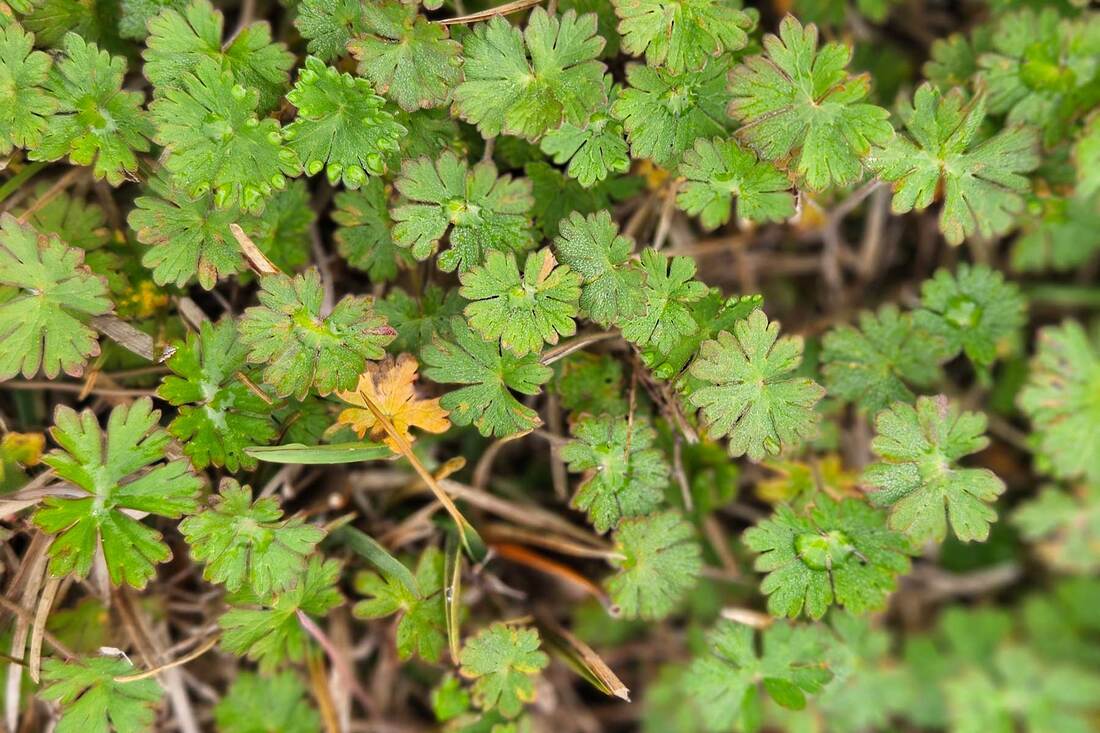


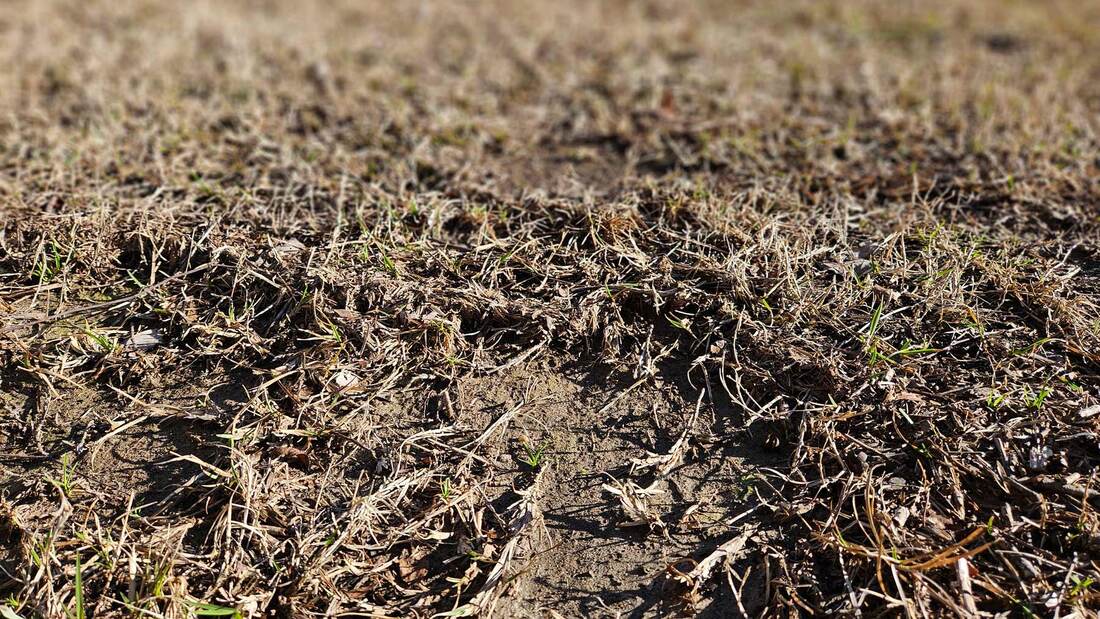
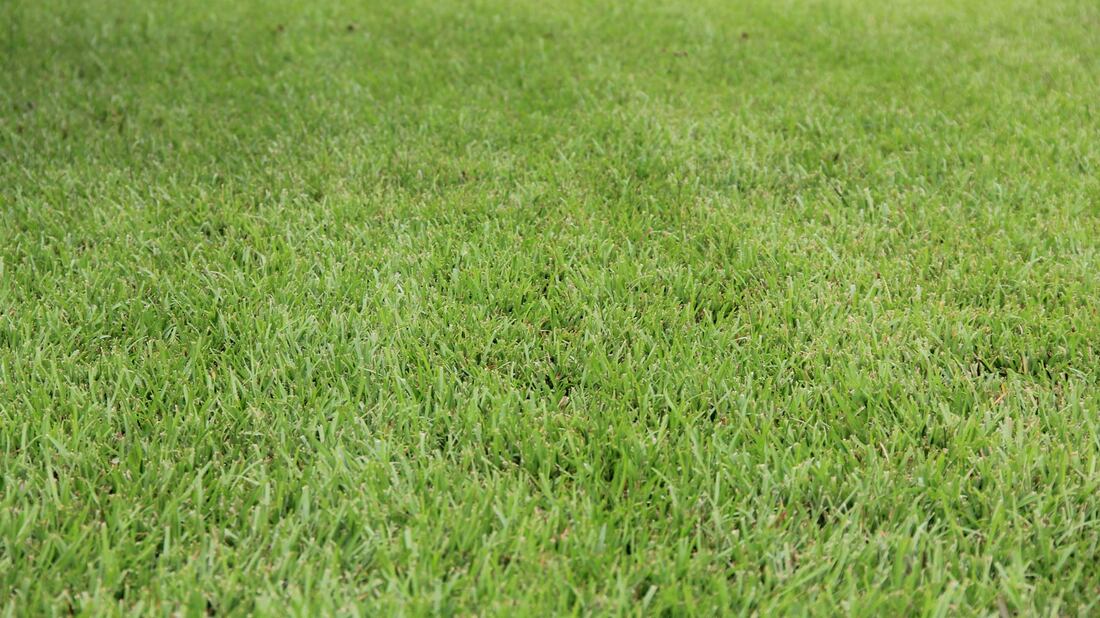
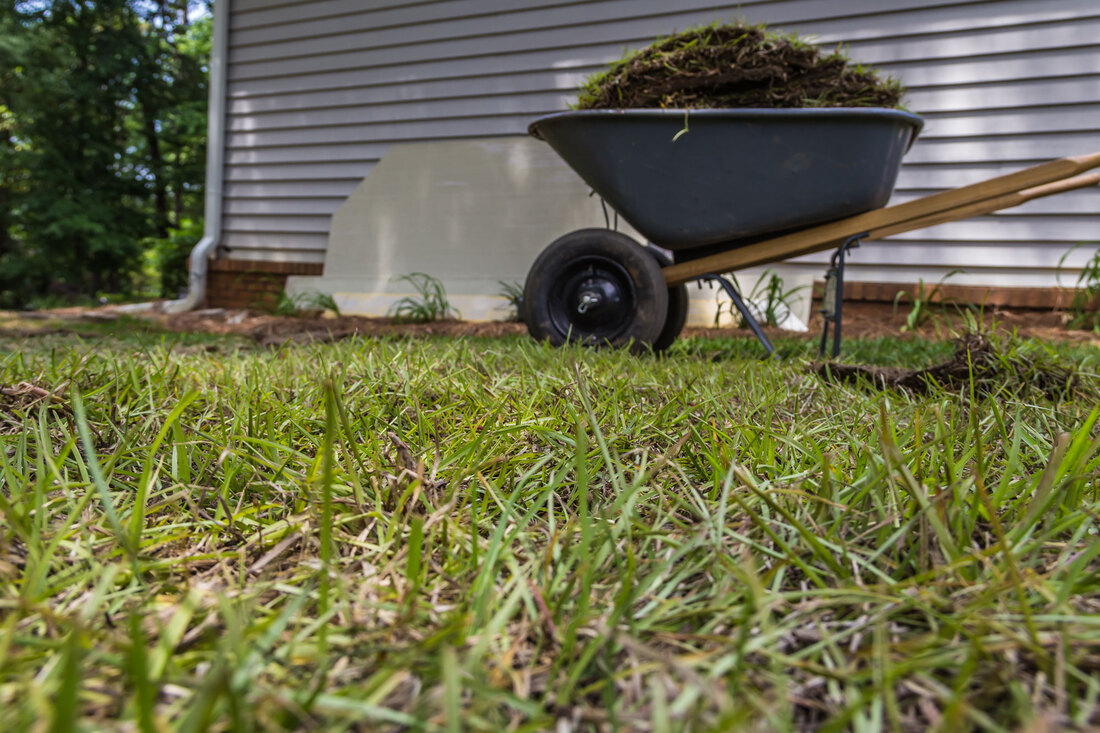
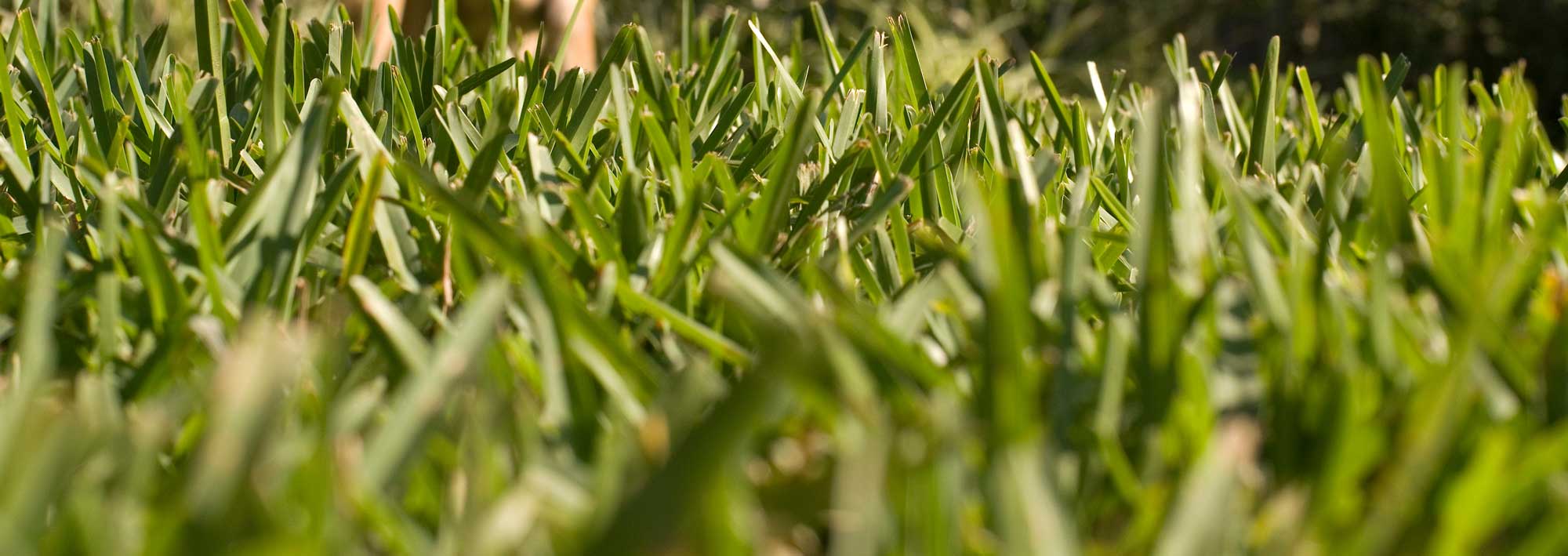
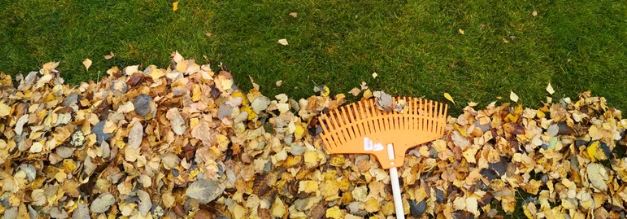

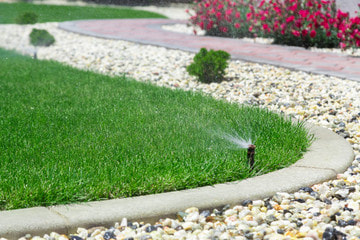
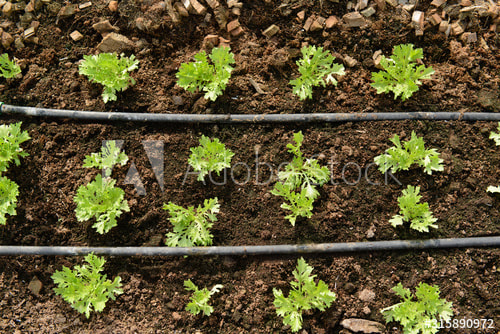
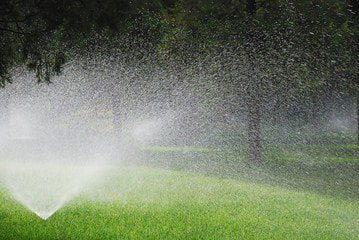
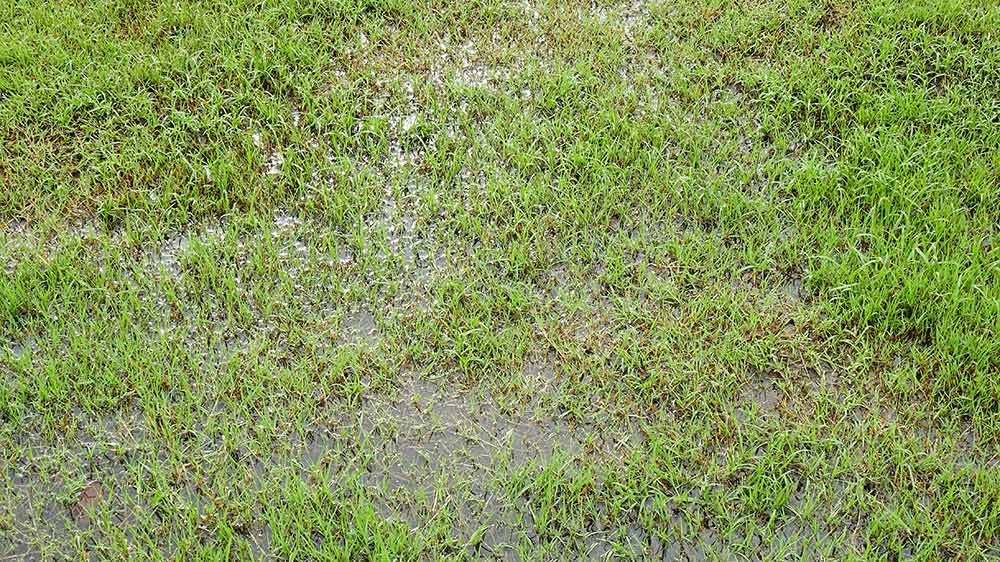


 RSS Feed
RSS Feed
